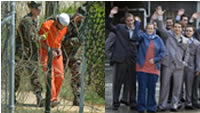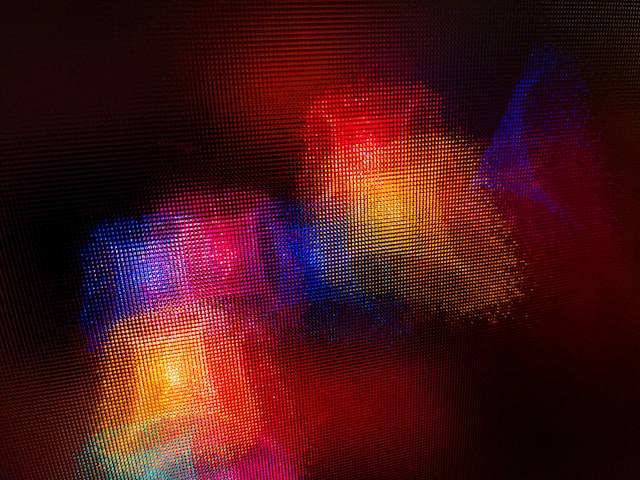Last week I recorded an interview with Tom Guarriello in Connecticut and Thomas Madsen-Mygdal in Copenhagen. We were talking about the impact of the rise of digital imagery on society and organisations. Tom’s been following YouTube with close interest since it started and is a regular video blogger. Thomas is a serial entrepreneur as well as the founder of Reboot. His latest business is photo sharing service, 23.
 Download the Podcast – 24m – MP3 (8.3 MB)
Download the Podcast – 24m – MP3 (8.3 MB)
 Podcast RSS feed for iPodder etc.
Podcast RSS feed for iPodder etc.
It was a suitably non-linear conversation. Here are some notes. Not a transcript but a rough idea of the content.
 0:00 Introductions Theme: images, especially digital, are becoming more important – what’s the impact on how we think and how society works. I reference Alan Moore’s post about the book, The Alphabet versus The Goddess. This contends that the arrival of the alphabet led to the demise of the feminine in society… but that the revival of image-based thinking, first with television and then online, is leading to a resurgence of feminine values and changes to the way we think. I ask Tom and Thomas to share their experiences.
0:00 Introductions Theme: images, especially digital, are becoming more important – what’s the impact on how we think and how society works. I reference Alan Moore’s post about the book, The Alphabet versus The Goddess. This contends that the arrival of the alphabet led to the demise of the feminine in society… but that the revival of image-based thinking, first with television and then online, is leading to a resurgence of feminine values and changes to the way we think. I ask Tom and Thomas to share their experiences.
 1:22 Thomas talks about 23 and how it has grown. He’s started to see weird photosharing accounts, for example of lettuceheads, suggesting more was going on than just people sharing private photos. Images and photos are undervalued as a communication tool in our culture, and we’re now seeing an explosion in direct, authentic, visual communication.
1:22 Thomas talks about 23 and how it has grown. He’s started to see weird photosharing accounts, for example of lettuceheads, suggesting more was going on than just people sharing private photos. Images and photos are undervalued as a communication tool in our culture, and we’re now seeing an explosion in direct, authentic, visual communication.
2:40 Tom talks about how he got into video blogging and how he finds it more interactive than text blogging.
 4.15 Tom talks about the organisational use of images. Organisational speech is often devoid of emotion; images allow people in organisations to bring emotional power to the stories they tell. Designers have always worked this way but found the rest of the organisation speaks in words and numbers devoid of emotion (“powerpoint hypnosis”)
4.15 Tom talks about the organisational use of images. Organisational speech is often devoid of emotion; images allow people in organisations to bring emotional power to the stories they tell. Designers have always worked this way but found the rest of the organisation speaks in words and numbers devoid of emotion (“powerpoint hypnosis”)
5.30 Thomas: we shape our tools and our tools shape us. The possible impact of image sharing on product development. How a CEO blog photo page changes how people see the organisation. Could visual blogging overtake text blogging?
7.20 Johnnie: opening the visual channel adds texture and bandwidth in our relationships with each other, getting away from the dessicated way businesses communicate. Using “animal bandwidth” that would never appear in a transcript.
8.34 Thomas tells about the impact of a CEO photoblog on a potential employee’s understanding of how the company worked – how she deconstructed the culture from about 500 photos. Making meaning from the weak signals in the pictures. Small signals set the context for understanding organisations.
10:24 Tom thinks a whole new set of skills are needed to cope with these trends. Johnnie says most people already have the skills to understand images – are organisations ready to cope with the impact?
12:00 Thomas: (as a species, historically) we communicated visuallly before having text. We experienced the world visually on a daily basis. In that sense, this is nothing new. What is new is the distribution and ability to capture images.
12:54 Tom: while the everyday use of these skills is natural to us, legitimising them in business is a whole other matter. Johnnie: if businesses don’t embrace the conversation, it will carry on around them.
 13:40 Johnnie gets into the iconography of events in Iran/Iraq. Compare orange jumpsuits vs business suits for prisioners. Tom/Thomas/Johnnie: what the conflict shows about the US’s skill in communicating with images outside the commercial sphere.
13:40 Johnnie gets into the iconography of events in Iran/Iraq. Compare orange jumpsuits vs business suits for prisioners. Tom/Thomas/Johnnie: what the conflict shows about the US’s skill in communicating with images outside the commercial sphere.

16:19 Johnnie: production values are being turned on their head, so that lower production values are more synonymous with authenticity. Tom gives an example of a client he’s advising not to overdo the slickness of imagery.
 17:25 Johnnie references Hugh Macleod on Dinosaurspeak – there’s an equivalent “dinosaur look”. Corporate imagery has been a bit like the underwear models in old-fashioned mail order catalogues. We can spot the fakeness at a hundred paces.
17:25 Johnnie references Hugh Macleod on Dinosaurspeak – there’s an equivalent “dinosaur look”. Corporate imagery has been a bit like the underwear models in old-fashioned mail order catalogues. We can spot the fakeness at a hundred paces.
18:15 Thomas talks about how excessive editing contributes to the sense of fakeness of corporate imagery. Also, he notes how we can process a great quantity of visual imagery. Ensuing discussion of how massive sharing opens up businesses to stakeholders.
21.25 Tom talks about the impact of user-generated images on US presidential politics – how it has disadvantaged Hillary Clinton.
22:07 Thomas explains about the lettuceheads…
23:58 Farewells…






